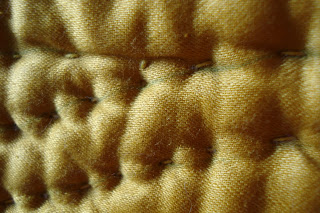.JPG)
Here is the church that I ring at every Wednesday from 12.30 to 1 o'clock. It is St Lawrence in Ipswich, very near to one of my part-time jobs. The tower is Victorian, but the rest of the church is medieval. Like Norwich, York and the City of London, there were a lot of churches in Ipswich, of which many are now redundant. St Lawrence had a congregation until September 1974, when the incumbent startled his parishioners one Sunday morning by telling them that the church would close immediately. Ownership was transferred to the Ipswich Historic Churches Trust. Two years ago, the church was transformed into a community centre with a restaurant. The aim is to get people back into work by offering them work experience and training in the restaurant.
The bells are the oldest ring in the UK as they date from 1440, and are called the"Wolsey bells". Cardinal Wolsey of Tudor fame lived nearby and would have heard the sound of these bells. His uncle was a wealthy butcher with a shop nearby and funded his education. The bells are thus preReformation - and still have their original clappers and bell canons - very unusual. Two years ago the bells were totally refurbished by the Whitechapel Bellfoundry and the tower strengthened. The Borough Of Ipswich, which donated a significant sum of money to the work, asked that the bells be rung every Wednesday, and I try to do this when I am able to.
The bells go very well, but as the bell wheels are large, they go slowly and require careful striking to sound their best. But they have a lovely mediaeval "hum" to them and are nice to ring, although with only five bells there is a limited repertoire of methods to ring! The tenor bell weighs about 14 hundredweight.
.JPG)
George W Pipe, who is in charge of the ringing. George is one of the best ringers in the country and has rung over 1,000 peals. George expects a high standard of ringing; the church receives a lot of visiting ringers who want to ring on this historic peal of bells.
.JPG)
A view into the church itself - you can see the restaurant beyond the glass partition or balcony. I find the glass a bit offputting! but am getting used to it...





















.JPG)

.JPG)
.JPG)
.JPG)
